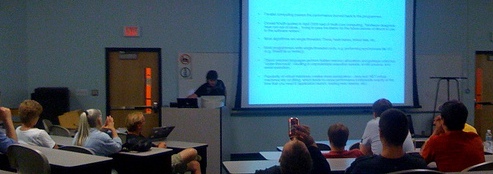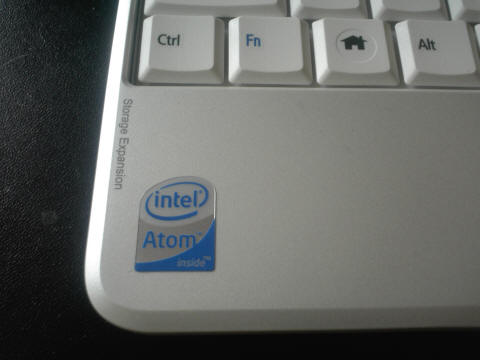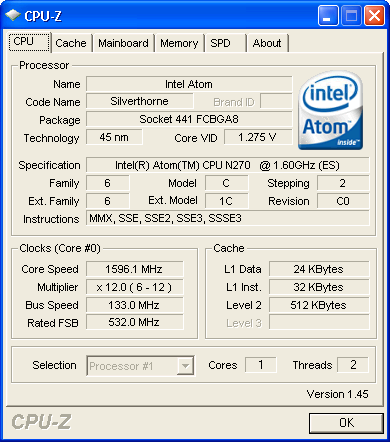NO EXECUTE!
(c) 2008 by Darek Mihocka, founder, Emulators.com.
August 20 2008
The Intel Atom - Going Further Back Into The Future I am back at home for a few short days resting between road trips. Fresh on the heels of my 7100-mile road trip to Dallas and Toronto, I will be heading out to San Francisco in a few days to attend the Hot Chips conference. With the Intel Developer Forum taking place this week in San Francisco, and my own testing of the Intel Atom based Acer Aspire One notebook, there will be lots of fodder for me to post about next month, not to mention posting some open source utilities I promised and finally telling you why I hate Hyper-V so much. From the early reports from IDF, it looks like Intel is going to embracing solid-state disk drives with fury. Still more promises about WiMAX (heard that story in 2005!) and yet why does a WiMAX provider like ClearWire still not have coverage even in Silicon valley? Next time I drive cross-country, I'd love to bring my WiMAX modem with me. The Intel Atom processor used by the Acer is an interesting little beast now that I have my hands on it. It's an in-order core, something Intel hasn't done since the Pentium MMX in the mid-1990's. If Core 2 represents Intel erasing all memories of the Pentium 4 by borrowing from its Pentium III design, the Atom represents an even deeper look back into the past. The micro-benchmarks I wrote during my trip have produced some stunning results which I did not expect which I will share with you next month. For example, that the Atom implements the full SSE3 and SSSE3 instruction set extensions (which even the AMD Phenom does not), the byte-swapping load/store MOVBE instruction which could be very handy for some emulation software, and has rather ridiculously low latencies on atomic interlocked memory operations (such as CMPXCHG) and store-forwarding operations which are in the single-digit clock cycles; latencies that beat the Intel Pentium 4 literally by an order of magnitude and even beat the desktop Core 2. Given that I was writing these tests in hotel rooms while keeping one eye on the Olympics, I will double check my latency results before giving the details. If the numbers hold up, it means that the Atom architecture could be better suited for multi-threaded applications than even the Core 2, and most certainly than the AMD Phenom or the Intel Pentium 4. For now, entertain yourself with my quick little look at the Acer Asprire One notebook, which UPS delivered to my doorstep way back on August 5. Atom based notebooks are definitely available and shipping! I have also been getting feedback from various people that this blog is getting too long and hard to follow. Tell me something I don't know! To address this, I added a little "recent postings" section to the main Emulators.com web page which will summarize the last few postings for you. Of course, you should read every page of Darek's Secrets, Pentium 4:In Depth, and NO EXECUTE! if you haven't already, and of course read my ISCA workshop paper. It is all only a few hundred easy-to-read pages of material in total. <grin> By chance and circumstance I ended up writing a little PowerPoint slide deck to summarize all my blog postings so far, and that should please some of you that have been complaining about this. After the Judas Priest show in Toronto on August 13, I was driving down the 401 and stopped by to see my old friend Ignac who now teaches computer classes at Conestoga College in Kitchener Ontario. It was the second-to-last day of classes for the summer semester, exams had just finished that morning, and so Ignac invited me to come give his class of sleep-deprived students a lecture on my various projects. Not wanting to bore the class with hundreds of pages of my online postings, I prepared this little PowerPoint deck for them, titled "The Real Y2K Crisis", as an introduction and summary of everything I've made you read so far concerning all that is wrong with desktop computers today. 10 slides, not bad, it can all be explained in fewer words after all. Although I did ramble on for well over 2 hours explaining those 10 slides, ha! So until I get a chance to do some real writing and posting next month, enjoy my super short PowerPoint presentation... The Real Y2K Crisis

